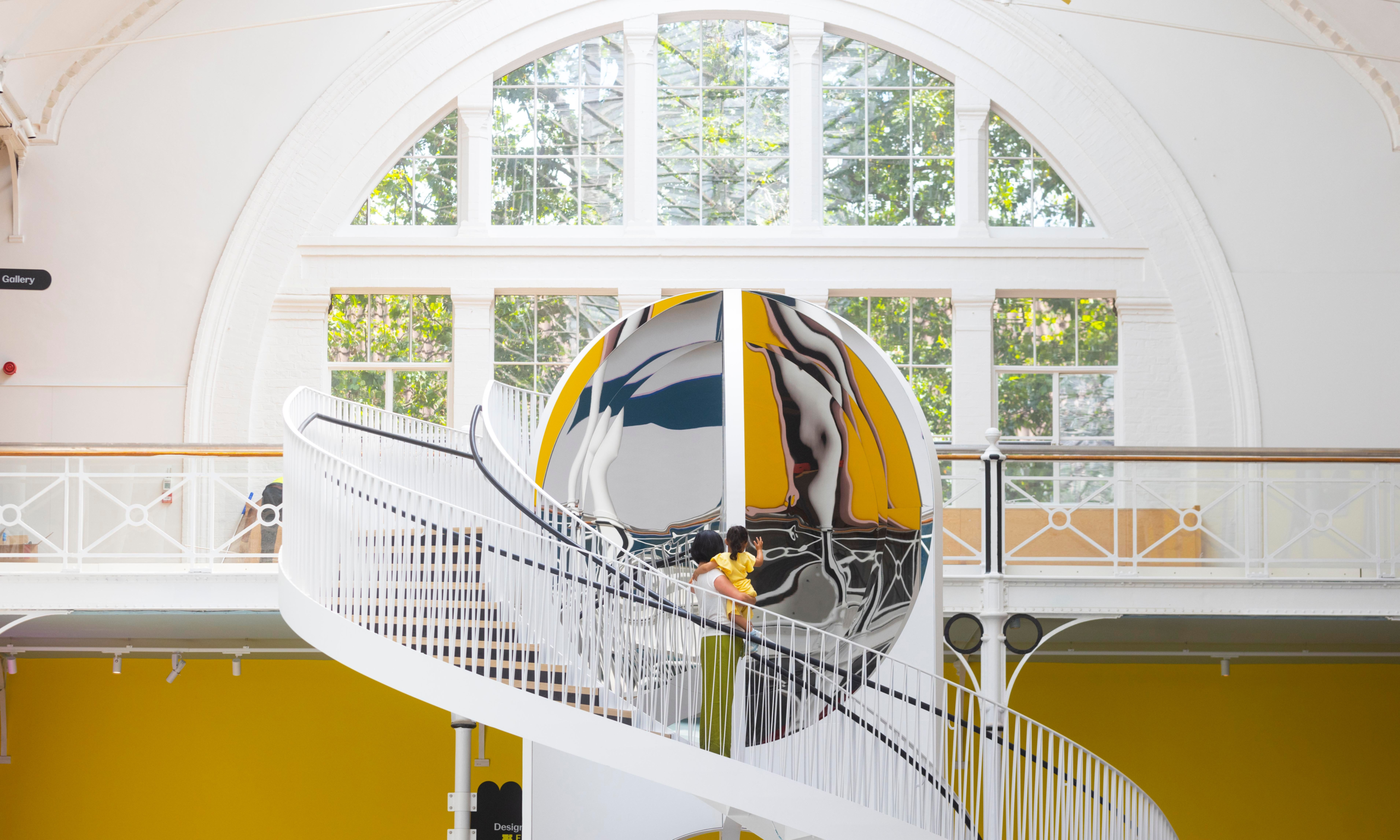Young V&A,Feature Staircase © David Parry, courtesy of Victoria and Albert Museum, London
On a wet autumn evening in November 2022, a posse of children in pyjamas, raincoats and wellies flooded onto the streets of Bow, East London, to defend a play space from demolition. As council workers set about smashing the fenced-off area, pupils of Chisenhale Primary School climbed on top of plastic road barriers to protest.
In the end, councillors had their way, and the site was cleared. But on 1 July, Young V&A opened its doors and the children of Tower Hamlets—indeed, all of London—now have their own space entirely protected for play.
The V&A’s Museum of Childhood has been transformed from a collection focused on the material culture of childhood—which parents and grandparents (nostalgically remembering the Playmobile and Action Men of their early years) enjoyed far more than children—into an active, object-rich museum centred on building cultural confidence in the capital’s most disadvantaged borough. And we could not relaunch at a more urgent time when, as Sally Bacon revealed in The Art Newspaper, art and design GCSEs are down 60% over the past 12 years and the pandemic has so cruelly put back children’s sociability, curiosity and creativity.
A building with a rich past
We do so in a much-loved building that has been reinvented time and again since its iron frame—the so-called “Brompton Boilers” originating at the 1851 Great Exhibition—was taken by horse and carriage from South Kensington to construct east London’s first public museum, the Bethnal Green Museum in 1872. Since then, it has served as a site for Food and Animal Products and English Costume, as well as hosting the Wallace Collection and National Portrait Gallery (until trustees deemed the location “an unsafe environment for art”). In 1974, the V&A director Roy Strong decided to transform it into the Museum of Childhood, drawing on its remarkable holdings of dolls’ houses, puppetry, rocking horses and childhood ephemera. Locally, it is still known as “The Toy Museum”.
We have now moved from a museum of childhood to a museum for children. It is neither a KidZania-style early years centre nor a repository for the social history of family life, but something new: an active, co-designed museum mobilising its collections to develop the creative capacity of 0-14 year olds. With 2,000 artefacts on display, it goes beyond toys to mobilise the full riches of the V&A’s holdings—from David Hockney prints to Samurai armour, alongside recent works by a wide range of names, from the designer Virgil Abloh to the artist Olafur Eliasson—to inspire and delight young minds.
Advances in neuroscience mean we know that 90% of brain development takes place before the age of five, so our Play Gallery supports cognitive growth through colour, sound and texture. Parents will have to get off their iPhones and play, roll and crawl around with their children as they engage with South Ken’s treasures. We have sandpits and giant marble-runs and, best of all, infants are able to sound out the alphabet through an A-Z of V&A objects, brought to life with new poems from Michael Rosen, Valerie Bloom and the children’s Laureate Joseph Coelho. Here, we actively encourage play—not just for the joy it brings, but because directed, purposeful play is the foundation of gross and fine motor skills as well as early listening and language capacity.
In the Imagine Gallery, 5-11 year olds can draw on the V&A’s Theatre and Performance collection to conjure up imaginary worlds, play make-believe and speculate about the secret lives taking place in Rachel Whiteread’s dolls’ house installation. Why is this important? Because educational psychologists have shown that imaginary play and fantasy worlds nurture divergent thinking and creative output. Visitors can participate in storytelling, poetry workshops and film screenings aimed at growing vocabulary and confidence.
Finally, our new Design Gallery has been curated to encourage early teens to think more deeply about the nature of design and how this might offer a career for them. From Bollywood posters to Notting Hill Carnival costumes to Extinction Rebellion prints, the displays showcase objects that explore both materiality and the ways in which design can change society: providing young people with a sense of agency in reshaping their world. And to help them, Young V&A is hosting a designer in residence in an open studio working with local pupils and after-school clubs.
Co-designed, from the start, with children, carers and parents, we believe Young V&A represents a genuinely new way of engaging families, of all sorts, with decorative and fine art collections. There are not too many touch screens or augmented reality headsets. Instead, we are confident that young people can be inspired by old things. What is more, as AI transforms the fabric of human intelligence, it is our Bethnal Green curriculum of looking, understanding, empathy, collaboration and oracy that Generation Alpha will need. Play, imagination and design are the building blocks of 21st-century human capacity—all of which need encouraging, not prohibiting.
• Tristram Hunt is director of the Victoria and Albert Museum, London

